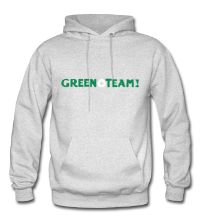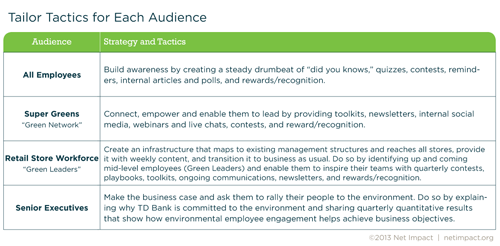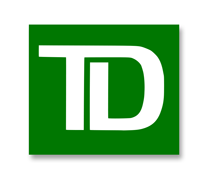
Small green teams tasked with transforming large corporations, governments, cities, and neighborhoods face some tough challenges. TD Bank’s three-person green team employed a range of strategies to inject sustainability thinking into 27,000 employees dispersed in 1,300 locations. I find four of their tactics very smart and can be readily adapted by green teams everywhere.
Green teams are often small. The three-person team at TD Bank, the second largest bank in Canada and sixth largest in North America, is not atypical. With limited resources, the team started an environmental employee engagement program in their U.S. operations just over a year ago, reaching out to their 27,000 U.S. employees scattered across 1,300 locations from Maine to Florida. While this is the case of a bank, I think many parts of their approach can be applicable to other organizations. I have highlighted four strategies and tactics from the case study, written by Net Impact and GreenBiz, that can be readily adapted to similar engagement programs in large companies, NGOs, universities, governments, cities and neighborhoods.
Survey, segment, strategize
When engaging a large audience—27,000 employees in TD’s case—the first thing to do is to divide the group into several segments. This way, you can tailor your tactics for each segment. The green team at TD grouped their staff into four segments: all employees, ‘Super Greens’ (more details below), retail workforce, and senior executives. Each of these four segments has their own engagement strategy and tactics.
To divide your audience into different segments, you should generally conduct a survey unless you already know your audience really well (which many think they do but often don’t). Retail staff has different work schedules and communication channels compared to, say, senior executives. Tailor strategies and tactics to each group for bigger impact, e.g. more team-based contests for retail staff, more quantified business cases for senior executives.

‘Super Greens’ are your best troops
‘Super Green’ is a term coined, to my knowledge, by Ogilvy & Mather for a segment of the population with the most positive green attitude. Super Greens use green as their leading decision making factor, ahead of cost, convenience and time. They are the first among their peers to take green actions, leading the way rather than waiting for friends, corporations, or governments to do so. (I have covered this in my article 12 Ways To Turn Green Intentions Into Green Actions and I have often applied this methodology in my engagement projects.)
In typical Western workplaces or communities, 10% to 20% of your audience has Super Green attitudes (various surveys have confirmed with similar findings). They can’t wait to green up their workplace, neighborhood, or school so that these environments catch up to their green lifestyles at home.
How do you find the Super Greens in your organizations? Keep your eyes open … Who is the first to sign up for those tree planting trips? Who put up the environmental news clippings in staff room noticeboards? Who picks out soda cans from the trash bin to put them into the recycle bin? (I’m not kidding!) Those are your Super Greens. Find them, then deputize and empower them to be your troops on the ground. In my experience, they are more than happy to help your cause, which is also their cause. Provide tools and break down obstacles for them. Help them help you and you both have a win win situation.
Test with control sample to quantify benefits
Senior executives often look for quantified benefits measured by metrics. While we often intuitively link sustainability, employee engagement, and customer relationships together, it is often difficult to quantify the connections. When TD tested their environmental engagement programs, they rolled out the pilots in three test regions and used one other region as the control. Measurements were taken in the control region just like the test regions, except the environmental engagement program was not implemented in the control region.

In just two months, levels of awareness, pride, and commitment were significantly higher in the test regions compared to the control. In addition paper consumption, measured in average sheets printed per day, reduced by 15% compared to a 1% decrease in the control. What’s more, employees were enthusiastically talking about reducing paper with one another and with customers. These measured results attracted the notice of senior executives and helped get buy-in from business units across the company.
Demonstrating measured benefits by using control sample is a powerful approach that can be used by large corporations, governments, cities and neighborhoods to make the case for their green programs.
Personalize messages for diverse audience
Personalized messages are better at resonating with audience. But with 27,000 employees dispersed through 1,300 locations as in TD’s case, how do you begin to personalize messages? At TD, green leaders are identified for each office or region—Super Greens are naturally good candidates. They receive weekly emails from the head office environment team that they then personalize or localize before sending on to their offices or regions.
Personalization may include inserting local contests, local green news, internal or public green events in their region, or just a personal note. In my experience, the closer the news is to a person, the more it resonates, e.g. a new recycle bin on your floor is more interesting than a new recycling statistic for the enterprise. The approach of head office providing common content ‘ingredients’ for local leaders to customize is a very efficient and smart tactic.
Changing culture is never easy. You may not notice much change at first despite the long hours you and your team put in. Keep going and play smart. Once the momentum builds up and you reach the tipping point, the movement is unstoppable. If you are a green team in a large corporation, NGO, university, government, city or neighborhood, take a look at these smart strategies (full case study here). They have been shown to deliver results. They can get you to that tipping point. If you have used similar strategies, please share them below. Together we can green the world, one corporation, one city, one neighborhood at a time. Do spread these tips: Share on Twitter, Share on LinkedIn, and Share on Facebook.
Image: Spreadshirt

[…] Participants to the program take a pledge to reduce their company’s footprint, engage their employees in green campaigns, and organize fundraisers for WWF. For example, in order to lower their company’s carbon footprint, they may upgrade the window treatments in the office to something that is made from eco-friendly materials like bamboo and reduces heating and cooling costs. Another activity that businesses could do is to appoint an “Energy Champion” to their company’s green team, who can take the lead in the office’s energy reduction campaigns. (See: How Small Green Team Can Transform Large Corporation) […]
[…] interview article I cited some best practice examples by Walmart Canada, Unilever Canada, TD Bank, Coca-Cola Canada, Toyota Canada, and HP Canada. I noted that one hidden benefit from […]
[…] I have summarized 12 key points that can help middle-of-the-road mainstream consumers turn their green intentions into green actions. (These tips can be adapted to influencing corporate culture, see How Small Green Team Can Transform Large Corporation.) […]